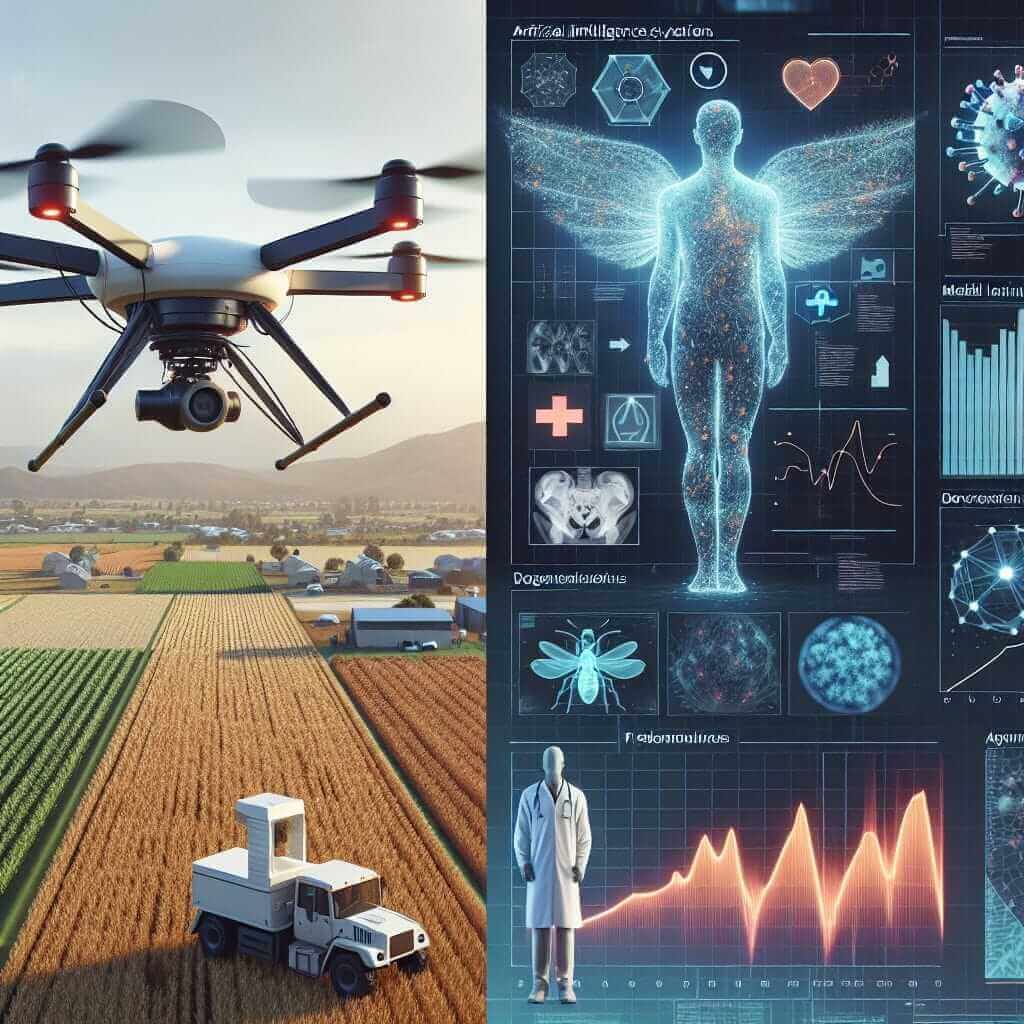The Reading section of the IELTS exam is designed to test a range of reading skills, including the ability to understand the main ideas, details, opinions, purposes, and inferences in various texts. One common theme in recent IELTS Reading exams has been advancements in technology, with a special emphasis on artificial intelligence (AI). Given the increasing significance of AI in various industries, it is highly likely that future IELTS exams will feature similar topics. In this article, we will delve into the subject “How is AI being used in disease prevention?”—a topic of contemporary relevance.
Nội dung bài viết
Main Content
Sample Reading Passage
The practice passage provided here is based on the Medium Text category and is structured to emulate the format and difficulty level found in an actual IELTS Reading section.
Artificial Intelligence and Disease Prevention
Artificial intelligence (AI) has made significant strides in recent years, offering novel solutions to various global challenges, including disease prevention and management. AI technologies are being used to predict, and in some cases, even prevent outbreaks of diseases that plague populations worldwide.
One prominent application of AI in disease prevention is in the realm of predictive analytics. For instance, machine learning algorithms can analyze vast datasets encompassing medical records, climate data, travel patterns, and social media activity, to predict the emergence and spread of infectious diseases. A case in point is the use of AI by the BlueDot platform, which successfully alerted the world about the COVID-19 outbreak days before official announcements by health organizations.
Another significant contribution of AI is in the development of diagnostic tools. AI-powered imaging technologies are utilized to identify early signs of diseases such as cancer, allowing for earlier intervention and improved survival rates. AI systems can analyze diagnostic imaging with remarkable speed and accuracy, often outperforming human radiologists.
Moreover, AI is also employed in the monitoring of disease vectors. For example, sensor networks and drones driven by AI algorithms can track the movement of mosquitoes that transmit diseases such as malaria and dengue fever. These AI-enabled technologies provide critical data for deploying targeted interventions, potentially saving countless lives.
While AI’s capabilities in disease prevention are impressive, they are not without challenges. Ethical considerations, data privacy issues, and the need for extensive training data are significant hurdles that must be addressed. Despite these challenges, the potential of AI to revolutionize healthcare and disease prevention is unequivocal.
Questions
Multiple Choice
-
What is the primary use of AI in predicting disease outbreaks?
a) Developing vaccines
b) Analyzing large datasets
c) Enhancing travel security
d) Creating social media strategies -
Which platform is mentioned as having successfully predicted the COVID-19 outbreak?
a) Watson Health
b) BlueDot
c) DeepMind
d) Google AI
True/False/Not Given
-
AI-powered imaging technologies are used to detect cancer.
- True
- False
- Not Given
-
The use of drones in disease prevention is still in the experimental phase.
- True
- False
- Not Given
Matching Headings
Match the following headings with the correct paragraphs:
- A. Role of AI in Diagnostics
- B. Challenges in AI Implementation
- C. Predictive Analytics and Disease Outbreaks
- D. Monitoring Disease Vectors
Answer Key
Multiple Choice
- b) Analyzing large datasets
- b) BlueDot
True/False/Not Given
- True
- Not Given
Matching Headings
- Predictive Analytics and Disease Outbreaks – Paragraph 2
- Role of AI in Diagnostics – Paragraph 3
- Monitoring Disease Vectors – Paragraph 4
- Challenges in AI Implementation – Paragraph 5
Common Mistakes in This Type of Tasks
Often, test-takers may overlook specific details or misinterpret the author’s claims in the passage, especially with True/False/Not Given questions. It’s critical to pay close attention to keywords and phrases and understand their relationships within the context.
Vocabulary
- Predictive Analytics (noun): /prɪˈdɪktɪv ˌænəˈlɪtɪks/ – Phân tích dự đoán
- Diagnostic Imaging (noun): /ˌdaɪəɡˈnɔstɪk ˈɪmədʒɪŋ/ – Hình ảnh chẩn đoán
- Intervention (noun): /ˌɪntərˈvɛnʃən/ – Can thiệp
- Vector (noun): /ˈvɛktər/ – Vật trung gian truyền bệnh
Grammar Points
- Relative Clauses: “AI technologies are being used to predict, and in some cases, even prevent outbreaks of diseases…”
Example: “The sensor networks that are driven by AI algorithms can track the movement of mosquitoes that transmit diseases such as malaria and dengue fever.”
Recommendations
To achieve a high score in the IELTS Reading section, focus on the following:
- Practice Regularly: Work on reading a variety of texts from different sources to improve your comprehension skills.
- Expand Vocabulary: Increase your understanding of academic and technical vocabulary relevant to commonly tested topics.
- Read the Questions First: Before diving into the passage, read the questions to know what information to look for.
- Time Management: Practice under timed conditions to improve your speed without sacrificing accuracy.
- Review Mistakes: Analyze your mistakes to understand where you went wrong and how to avoid similar errors in the future.

By following these strategies, you’ll enhance your reading skills and increase your chances of scoring high on the IELTS Reading section.